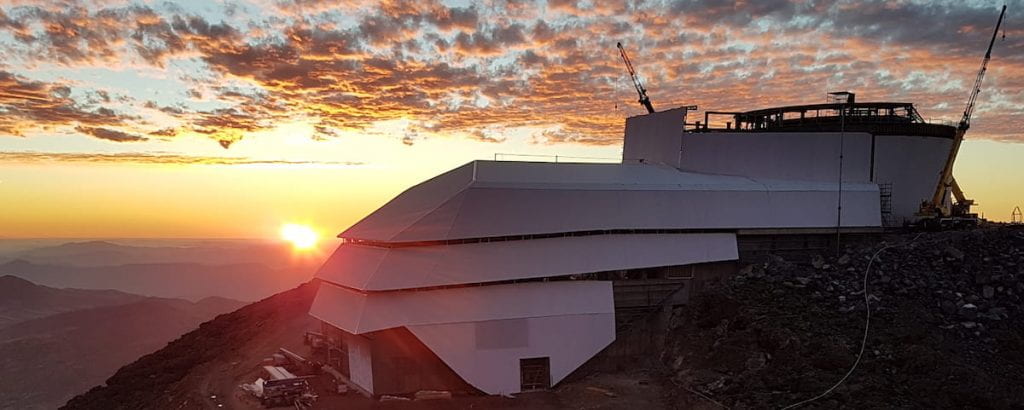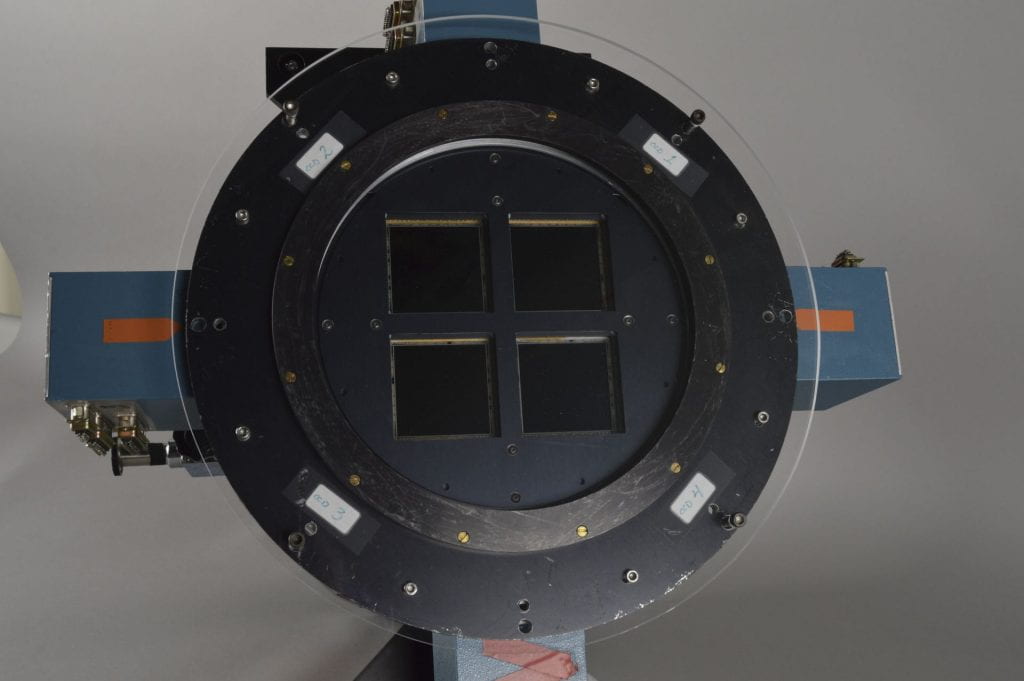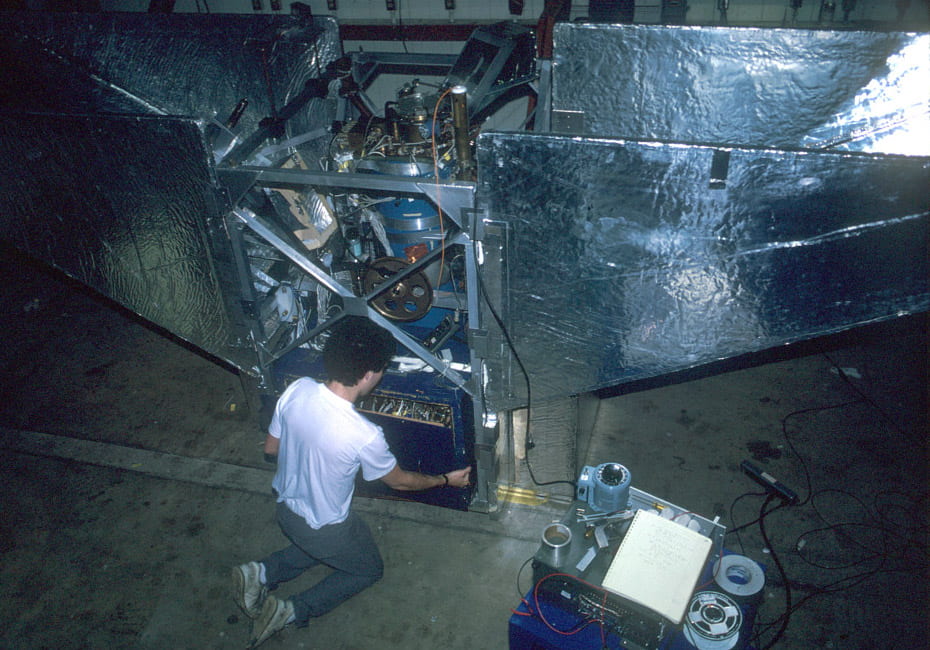Here are some of the major projects I have pursued – check the Publications for details on these and others.
The Exciting Present
The Dark Energy Survey completed a 6-year, 5-band survey of 1/8 of the full sky in early 2019. The data are taken with the Dark Energy Camera installed on the Blanco 4-meter telescope, installed on Cerro Tololo, Chile. Analyzing these data is the primary current focus of our group’s work. As the name implies, the primary goal of the project is to measure the properties of dark energy (and dark matter). Our group has contributed heavily to the commissioning, calibration, and image reduction pipeline, as well as the science analyses of the weak gravitational lensing and galaxy clustering in the survey. We are also searching the DES images for trans-Neptunian objects. I have served as Project Scientist and as co-chair of the Science Committee for DES.
The Promising Future
The Large Synoptic Survey Telescope is a much more powerful successor to DES, under construction on Cerro Pachon, Chile, as a key project of both the US National Science Foundation and Department of Energy. It is a new 8-meter-diameter telescope and camera custom-designed to image the entire Southern Hemisphere (plus a bit of the North) repeatedly over a 10-year survey. We hope to transfer our experience with DES and develop new algorithms to all LSST to meet its full potential for cosmology and TNO-hunting. Some of the thorniest problems are how to deal with overlapping galaxy images, and how to determine their redshifts precisely – we are focussing on these!
Euclid is a 1.2-meter telescope under construction by the European Space Agency. It is designed to take high-resolution images of half the sky, for improved measurements of weak gravitational lensing and other cosmological signals. We are among the US partners in this project, funded by NASA to help improve the weak lensing measurement algorithms.
The Glorious Past
I led the design, construction, and use of The Big Throughput Camera, which during its time (1996-1999) was the most powerful imaging camera on a large telescope in the world. The project was initiated by my postdoctoral advisor Tony Tyson, and funded by our employer, Bell Laboratories, but I switched jobs 2 more times before finishing it! The BTC was very successful, not only helping us discover cosmic lensing shear and the outer “edge” of the TNO Kuiper belt, but also was used extensively by the researchers who were awarded the Nobel Prize for discovering the accelerating expansion of the Universe using high-redshift supernovae. The BTC is now on exhibit at the Smithsonian National Air & Space Museum, in the Explore the Universe wing!
My PhD thesis with Prof. Paul Richards at UC Berkeley was to modify and re-fly a balloon-borne instrument to measure the spectrum of the cosmic background radiation. This instrument is also in the Smithsonian, right next to the BTC! Although in this case I was a minor player: the instrument’s true claim to fame is the early groundbreaking CMB measurements by Paul’s earlier students, David Woody and John Mather. The picture below shows me preparing the instrument for launch in 1987.





